
In a July 2024 session, Ninh Binh Province planned to merge Hoa Lu District and Ninh Binh City into Hoa Lu City in early 2025. The new city will have an area of approximately 150 km² and a population of 250,000. Once again, the ancient capital become a famous address.
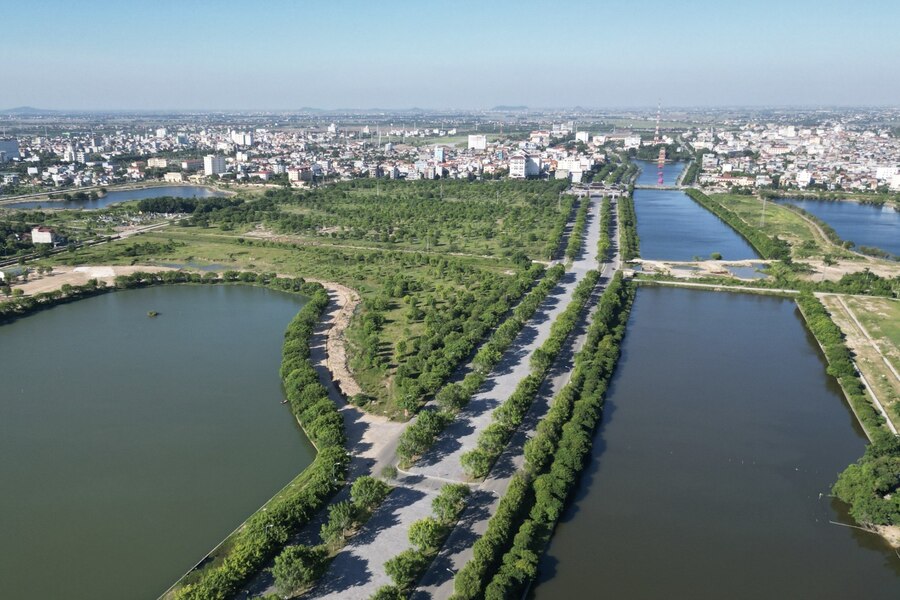
Ninh Binh City on Day River. Photo: Giao Thong Newspapers
It will be developed as a historical and cultural heritage urban area, based on world-class cultural and natural heritage sites. Thanks to its tourism advantages, the province is confident that the city will lead the local economic development. Continue reading to discover the upcoming Hoa Lu City attractions with Asia King Travel.
Hoa Lu was the first capital of the centralized feudal state in Vietnam, existing for 42 years (968-1010) with three consecutive dynasties: the Dinh, Early Le, and Ly dynasties. The district has famous landmarks and historical sites such as the ancient capital, Trang An - Tam Coc - Bich Dong, Thung Nham Bird Garden, etc.
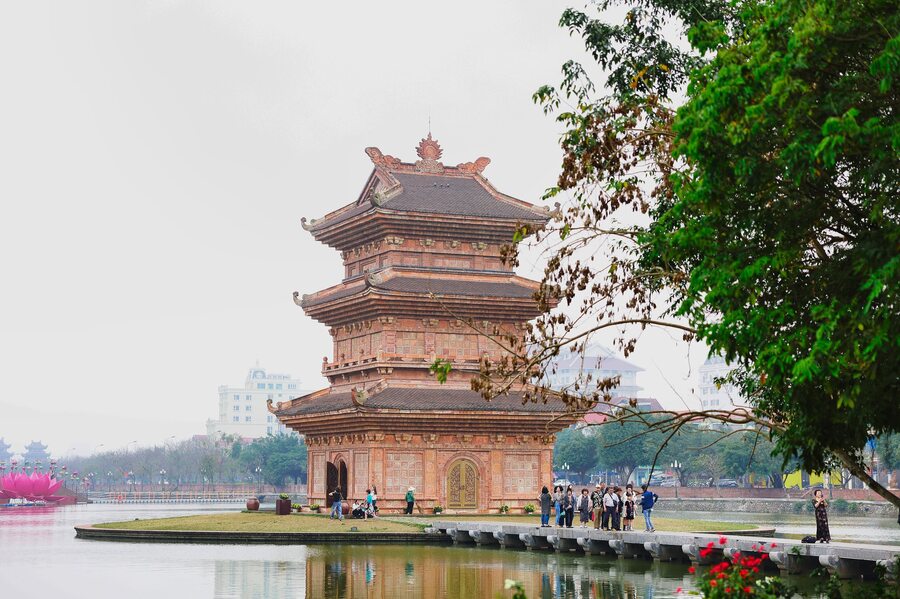
Hoa Lu District still preserves the styles of hundreds, thousands of years ago. Photo: Nguyen Manh
Ninh Binh Town was established in 1981. When Ninh Binh Province was re-established in 1992, it became the economic, political, cultural, and social center. The township was recognized as a provincial city in 2001.
Administratively, Hoa Lu District almost entirely surrounds Ninh Binh City. The city's area is only 46.75 km², below the national standard. The city's size is too small compared to the rate of urban development, causing the central area's infrastructure to be overloaded and social facilities unable to meet the needs of a large city.
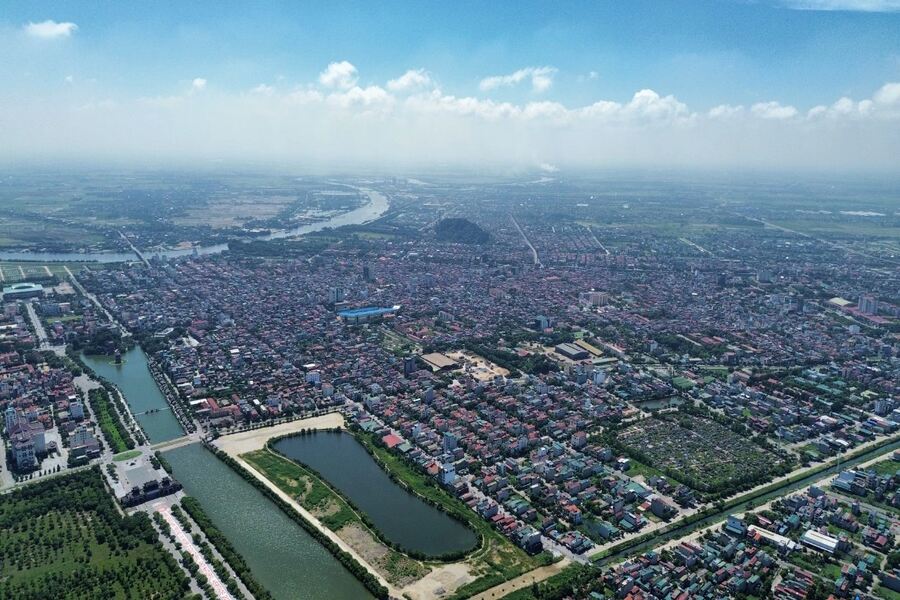
After the merger, the new city will be three times larger than the current one. Photo: Thanh Nien
Meanwhile, Hoa Lu District has a large area, beautiful landscapes, and is adjacent to Ninh Binh and Tam Diep cities. However, the district's economic development is slow, and its rural management model makes it difficult to exploit the local cultural heritage fully. Therefore, the merger will minimize limitations and promote the strengths of both localities.
When asked about the name Hoa Lu City, most people in Ninh Binh City expressed their strong agreement. Mr. Pham Van Thiem, a resident of Bich Dao ward, Ninh Binh City, shared: "The name Hoa Lu has been associated with the people of Ninh Binh for a long time, so I completely agree with the new name after the merger."
Mr. Pham Minh Thong, a resident of Thien Ton Town, Hoa Lu District, shared that the merger not only presents a great opportunity to improve people's quality of life but also motivates them to develop the economy. With stronger investment, UNESCO World Heritage Trang An will attract even more tourists.
Overall, based on the survey of public opinion, the majority of people agree and support the merger and the new name. The name Hoa Lu reminds us of a time when Ninh Binh Province was the capital of the country, a source of pride for every resident here.
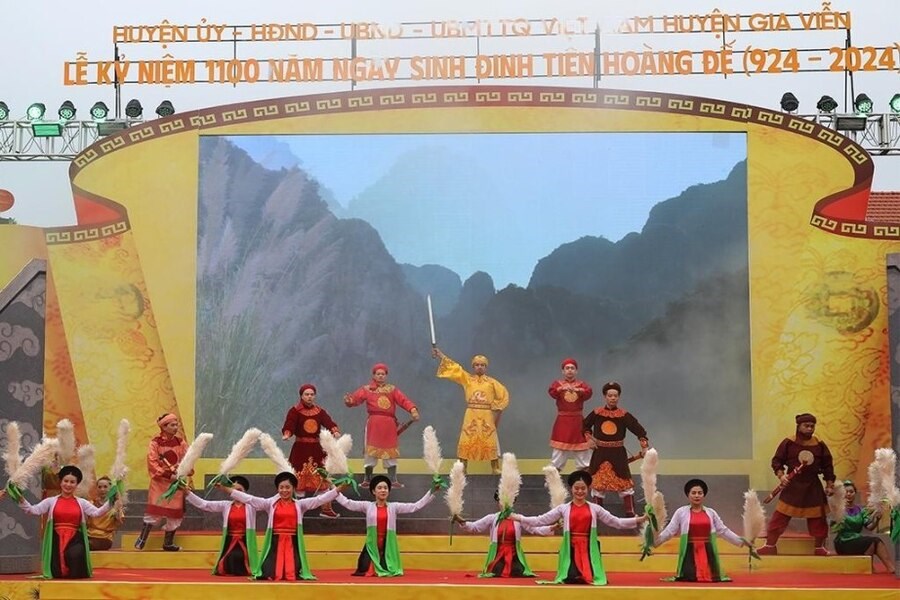
Born in Ninh Binh, King Dinh Tien Hoang had the merit of unifying Vietnam and establishing the first monarchy. Photo: Ninh Binh Newspapers
Hoa Lu City will develop as a heritage city, focusing on natural, cultural, and historical values. While the province will prioritize economic development, the city will still preserve its historical sites and landmarks. The province also aims to upgrade the city to a first-class city (a high city rank just behind Hanoi and Ho Chi Minh City), becoming a national tourism center.
Suggested for you: Ninh Binh Tour 3-Day: Natural beauty and Cultural heritage
Surrounded by towering mountains like natural walls and protected by Nho Quan fields and Ngo Dong River as moats, Hoa Lu Ancient Capital was an ideal military location for a newly independent nation. In 968, King Dinh Tien Hoang unified the country after defeating 12 warlords and chose this place as the capital of Dai Co Viet.
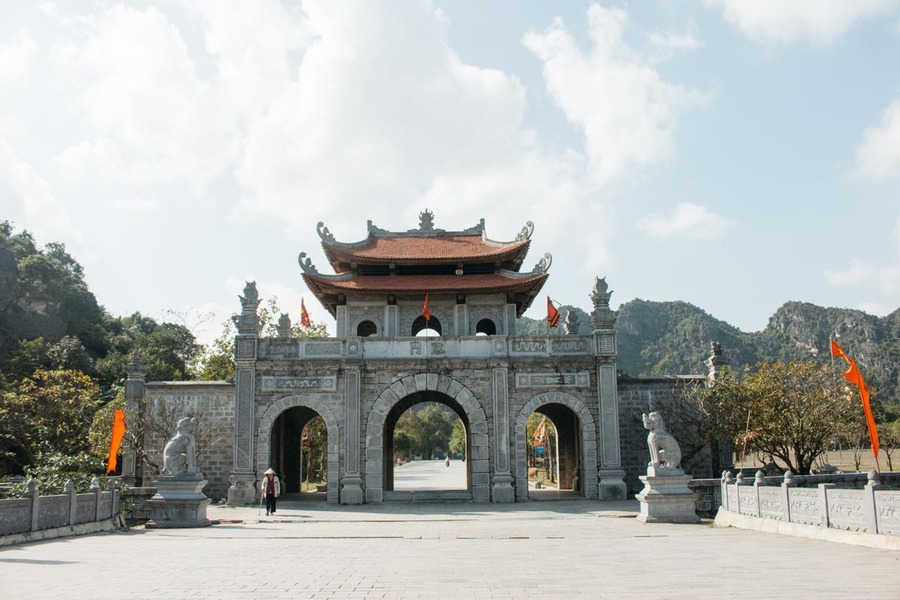
Entrance gate to the ancient capital. Photo: MIA
After over 1,000 years of history, the significant historical relics have been well-preserved. Most notably are the temples dedicated to King Dinh Tien Hoang and King Le Dai Hanh. Additionally, numerous Buddhist pagodas are scattered throughout the 300-hectare complex.
Bai Dinh Pagoda is located to the west of the ancient capital. The old Bai Dinh Pagoda was built in 1136, and a new religious complex was constructed in 2003. The pagoda currently holds 8 Vietnamese and Asian records for its size, ranking among the largest pagodas in Asia.

The new Bai Dinh Pagoda Complex. Photo: Thai Tong
The old temple complex is nestled near the summit of a quiet mountain. Without massive pillars or grand palaces, the Buddhist altars are tucked away within the mountain, adding to the sacred and mysterious atmosphere. The path leading to the temple is also a scenic route for Buddhists.
In stark contrast to the humble old temple, the new complex is a magnificent, almost heavenly sight. The new Bai Dinh Pagoda displays majestic statues adorned with intricate carvings. The entire complex is like a sparkling jewel. Its architecture is characterized by grand, imposing structures that are distinctly Vietnamese and built primarily with local materials.
Trang An is a tourist destination that seamlessly blends nature and history. Visitors will be amazed by the cave systems, limestone mountains, and diverse, lush ecosystems, alongside historical relics linked to the ancient Dai Co Viet kingdom.

Enjoying the scenic beauty from a boat. Photo: Vietjet Air
The eco-tourism area has dozens of caves above winding rivers and lakes, creating a picturesque landscape. Inside each cave, you'll find stalactites in various shapes, and the dripping water keeps the air cool and refreshing. Another unique feature of Trang An is its interconnected lakes, allowing visitors to explore the natural surroundings on a circular river journey.
Tam Coc-Bich Dong is also famously known as "Ha Long Bay on Land". The entire area is a system of limestone mountains and rice paddies on both sides of tNgo Dong River. Tam Coc refers to the three largest caves: Ca Cave, Hai Cave, and Ba Cave.
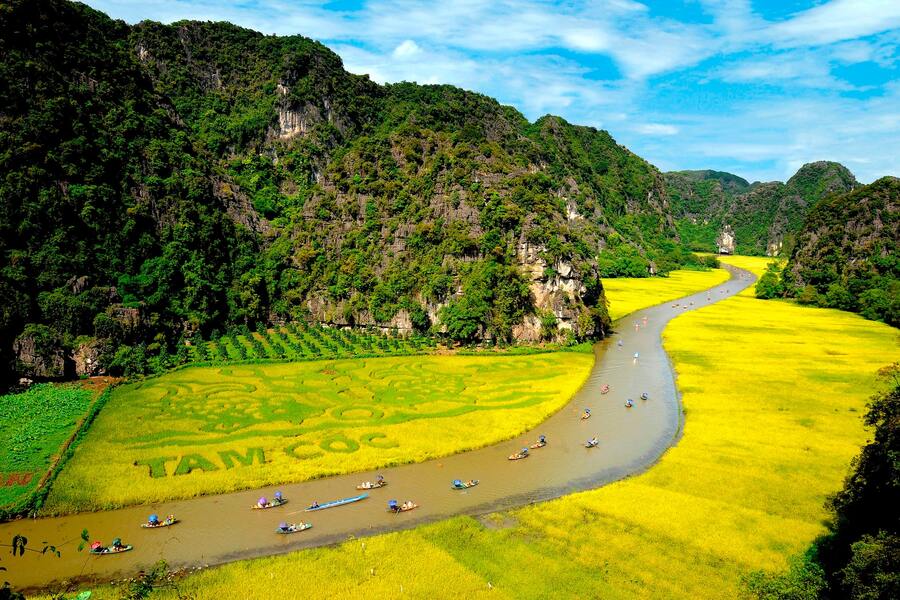
The iconic image of Ninh Binh tourism to the world. Photo: Ninh Binh Tourism Promotion Center
The most popular activity is a boat ride on the river. The boat takes visitors on a winding journey through cliffs, caves, and rice paddies. The round trip takes about 2 hours. The scenery of Tam Coc, especially along the Ngo Dong River, changes from lush green to golden yellow depending on the rice harvest season.
During your boat trip on Ngo Dong River, you'll also visit Mua Cave. A white stone staircase of 486 steps leads from the foot to the top of the mountain, resembling a miniature version of the Great Wall of China. The sides of the steps are intricately decorated with carvings of dragons and phoenixes, showcasing the exquisite craftsmanship of the Tran Dynasty.
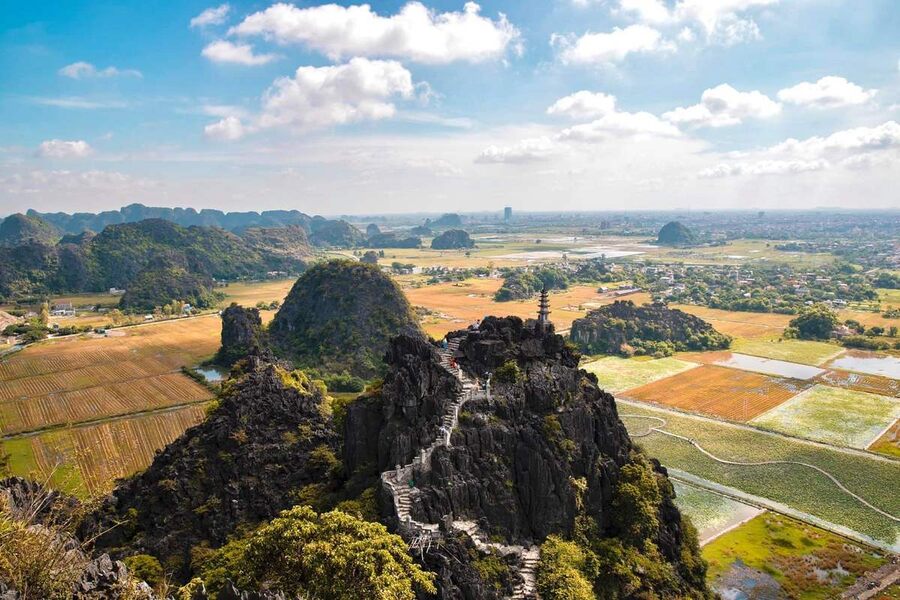
The breathtaking view from Mua Cave overlooks the surroundings. Photo: Vnontrip
From the mountaintop, you'll be rewarded with panoramic views of Hoa Lu's natural beauty. Expansive rice fields, rolling hills, winding rivers, and leisurely drifting boats. The tower at the summit is a popular spot for historical-themed photos. The best time to visit Mua Cave is during the lotus season when the ponds are adorned with blooming lotus flowers, creating a vibrant and romantic setting.
Hoa Lu City's establishment is a wise decision to boost tourism in Ninh Binh province. With its existing advantages, the city will become a must-visit destination for every traveler to Vietnam. Contact Asia King Travel today to plan your visit!
Suggested for you: Ninh Binh Trip Full-day: Explore Hoa Lu & Trang An